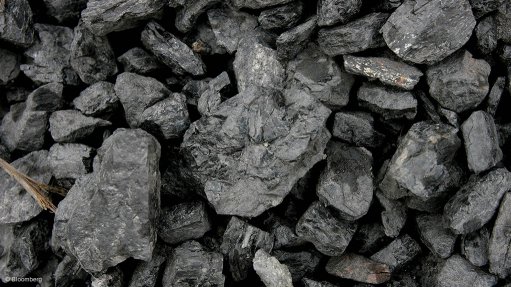
Photo by: Bloomberg
TORONTO (miningweekly.com) – Record-low natural gas prices and high inventories are expected to keep a lid on thermal coal prices until at least the second half of 2017, market analysts at energy and metals benchmark price assessor Platts said on Tuesday.
According to Platts Coal Trader managing editor Andrew Moore, 2016 would in all likelihood be the first year ever that natural gas would overtake coal as the primary energy source for electricity generation in the US.
Coal’s role in energy generation had been steadily declining since 2008, when it accounted for nearly half of the country’s power generation, falling to about 33% of the overall mix in 2015. In contrast, natural gas consumption for generation had increased in this period from a fraction over 20% in 2008, to about 32% in 2015. It was expected to account for about 34% this year, as opposed to the 32% predicted for coal.
The steady rise of renewable energy generation had also been chipping away at coal generation.
US coal miners had been dealing with increasing pressure from stricter pollution controls, falling demand from China and increasing competition from natural gas. Falling prices and tighter legislation have wreaked havoc on the North American coal industry in recent times, forcing major players such as Arch Coal, Walter Coal, Patriot Coal and Alpha Natural Resources to file for bankruptcy.
Addressing the Platts North American Coal Outlook Webinar on Tuesday, Moore pointed out that, at a natural gas price of $2.50 per one-million British Thermal Units (MMBtu) delivered to a power generator, all main thermal-coal producing basins in the US proved uneconomical against gas power generation, encouraging generators to make the switch and ditch coal for natural gas.
However, at a delivered price of about $3.50/MMBtu, most coal basins proved more economical than natural gas, except Central Appalachia (CAPP) operations, which had higher mine-to-plant delivery costs.
The Powder River Basin coal tended to have the lowest delivered cost, mostly owing to its strong reliance on shipments by rail.
As the Henry Hub Futures average price for natural gas tumbled from about $4.25/MMBtu in 2014 to about $2.25/MMBtu in 2016, coal consumption by US utilities were expected to fall in the same period from about 850-million short tons to 710-million short tons this year.
Meanwhile, the 50% drop in gas prices since 2014 had resulted in the US coal producers sharply reducing coal production capacity, following US net summer coal generation capacity, down from about 300 GW to less than 280 GW currently.
Meanwhile, total power sector coal stockpiles had been rising above 150-million short tons, showing an inverse relationship to the declining gas price, which had late last year dipped below $2/MMBtu.
For 2016, Platts expected the power sector’s coal demand to total only 750-million short tons, an unambiguous decline from 900-million recorded in 2015 and one-billion short tons in 2014.
However, all was not gloom, with Platts Bentek power analyst Jonathan Nelson noting that there was potential coal price upside in the latter half of 2017, as stockpiles diminished. Gas prices were only expected to rise marginally until end-2017, barely enough to benefit coal.
Platts quantitative modelling senior analyst Bob Yu underlined that the scales were currently tipped in favour of natural gas, owing to its historic low prices, lower emissions and being more efficient, compared with coal’s positives that included less supply interruptions and less price volatility.
He noted that the gas market was oversupplied, as a mild North American winter, compounded by sustained production levels owing to rising output in the north-east US, left storage inventories at all-time highs. “With domestic demand capped and only limited capacity for exports, natural gas prices are likely to remain suppressed for the remainder of 2016,” he said.
While baseload gas generation was expected to increase with another 8 GW of coal retirements expected this year, gas generation should continue to grow. The increase in renewable generation lent to a natural shift towards gas-fired spinning reserves, he noted.
With gas prices remaining low for so long, many electric utilities had already switched to gas generation. Any significant incremental switching would have to come from Texas and the Midwest, which was expected to place a damper on utilities’ economic switching potential this year, Yu advised.